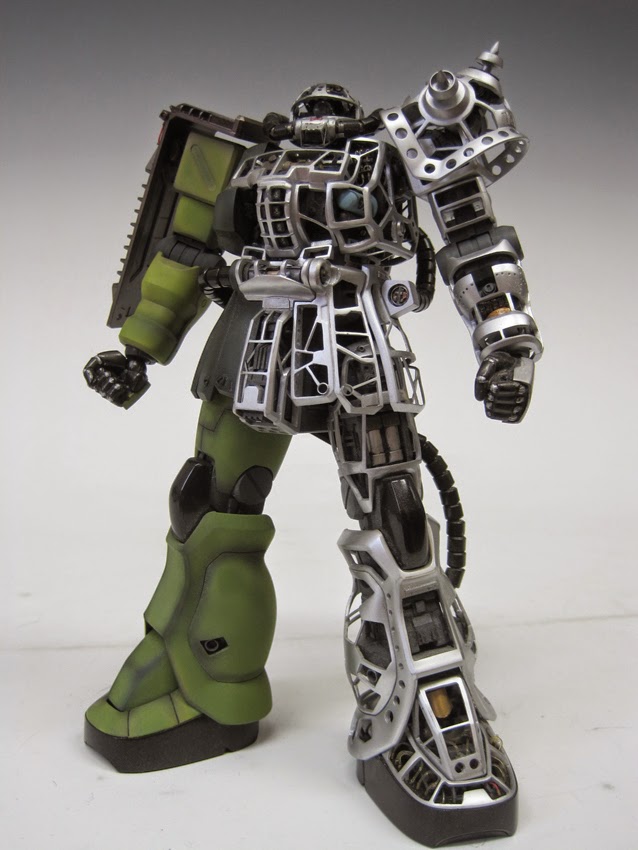Exploring the Inner Workings of Giant Robots
I've always been fascinated by the giant robots that populate sci-fi movies, TV shows and comic books, so much so that I've regularly wondered what these fantastical machines look like under their metallic skins. I suppose part of that fascination came from the "used universe" aesthetic that George Lucas used throughout his Star Wars movies, where high-tech machinery was frequently juxtaposed with vehicles and robots that were on the verge of falling to pieces. Unfortunately, it's hard to provide a detailed look inside of a machine that doesn't exist; thus, viewing the arrangement of pistons, motors and joints that make a giant robot move was a rarity when I was growing up.
Thankfully, times have changed and Japanese model kit companies have gone to great lengths in recent years to satisfy sci-fi fan boy curiosity with kits that represent both the inside and outside of fictional giant robots. These are more than just intricate robot kits with multiple points of articulation; these kits go deep beneath the metallic surface so hobbyists can see what makes such mechanical titans tick. Click below for more details about these fascinating representations of technology that will never be.
Of course, the Japanese love their giant robots, so it's only inevitable that they would go to great lenghts in making robot model kits and toys that provide details with which no one else would bother. I remember how the '80s era Zoids kits from Japan (particularly the ones that were sold in the U.S. under the Robo Strux name) allowed an occasional peek under the robots' armor, and some of the Robotech art books featured a few cutaway schematics of various anime mecha.
A cutaway schematic of a Robotech mecha.
Yet even back then, the best robot stuff was sold mostly in Japan. For example, Takara released a series of 1/72 scale model kits that were based on the mecha from the Fang of the Sun Dougram anime series, kits with die-cast metal parts and removable body armor that exposed some the machinery underneath. There was also the legendary chogokin robot toy of Tetsujin 28 (a.k.a. Gigantor) that was part of the Godaikin line in the mid-80s, a toy that featured multiple magnetic panels that opened to reveal the robot's insides.
Above: One of Takara's Dougram robot kits from the early '80s.
Below: The Godaikin Tetsujin 28 robot toy, with magnetic panels removed.
Flash forward to the modern day, and Japan's production of hyper-detailed robot model kits and toys is going as strong as ever. The most impressive I've seen so far have been Bandai's High Grade (HG), Master Grade (MG) and Perfect Grade (PG) Mobile Suit Gundam kits. These kits distinguish themselves from other robot kits by providing inner frames that serve as the foundation for the models.
One of Bandai's inner frames.
The inner frames consists manipulator joints, hydraulics and inner mechanics that allow the kits to assume many different poses even after the armor and weapons have been attached to the frames. Not to leave out the opportunity to provide even more detail to already intricate kits, many of the inner frames look like the metallic skeletons of these anime machines, as if they would be an essential part of the scenery if giant robot production factories actually existed.
Below is a selection of pictures that I found on CollectionDX and other sites around the Internet that show the inner frames before and after the model kits are completed.
MS-07B Gouf Version 2.0:
RX-93 Nu Gundam Version Ka.:
RX-78-2 Gundam (Clear Version):
RX-78-2 Gundam, Version 3.0:
GN-X:
Zaku Minelayer:
Mass Production Gelgoog, Version 2.0:
00-Raiser:






















Comments
Post a Comment